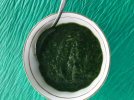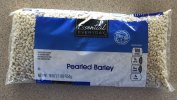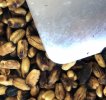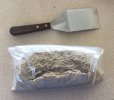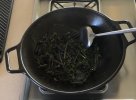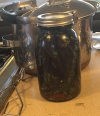wildmanh
Part time Leather Bender/Sheath maker
- Joined
- Jul 9, 2000
- Messages
- 7,764
Gluten Free Fried rice with a twist
Ingredients:
2 garlic cloves
2 to 3 stalks cellery
1 medium to large onion
3 mushrooms
1 to 1-1/2 cup favorite mixed veggies
Seasonings:
Red Pepper
Salt
Basil
Oregeno
Rosemarry
Vineger
Butter or Oil
Cut up ingredients and place them in seperate containers.
Take a 12" frying pan and put the following in while heating the pan on medium: Oil or butter, Garlic, red pepper, Oregeno, and Rosemarry
Stir the ingredients while the pan gets hot
When the pan is hot add the cellery and saute.
When the Cellery is almost done add the onion and continue sauting.
Add Mushrooms when the onions start to go clear
When the mushrooms look about done add the veggies
Add Basil, more Rosemarry and Oregeno to taist
Add Vineger
Saute everything till they are done. At this point you can either add the rice, more Vineger and some Soysauce or not. Serving the fried veggies on the side is the twist and my prefered way of doing it.
Goes great with Grill chicken and Brockly or Candied yams.
Ingredients:
2 garlic cloves
2 to 3 stalks cellery
1 medium to large onion
3 mushrooms
1 to 1-1/2 cup favorite mixed veggies
Seasonings:
Red Pepper
Salt
Basil
Oregeno
Rosemarry
Vineger
Butter or Oil
Cut up ingredients and place them in seperate containers.
Take a 12" frying pan and put the following in while heating the pan on medium: Oil or butter, Garlic, red pepper, Oregeno, and Rosemarry
Stir the ingredients while the pan gets hot
When the pan is hot add the cellery and saute.
When the Cellery is almost done add the onion and continue sauting.
Add Mushrooms when the onions start to go clear
When the mushrooms look about done add the veggies
Add Basil, more Rosemarry and Oregeno to taist
Add Vineger
Saute everything till they are done. At this point you can either add the rice, more Vineger and some Soysauce or not. Serving the fried veggies on the side is the twist and my prefered way of doing it.
Goes great with Grill chicken and Brockly or Candied yams.



